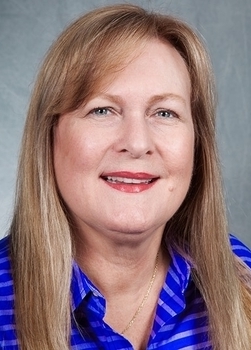I was prompted to write this, and the prior post, because of Magnus’ recent move. The move necessitated discarding many tools which have been useful during our careers in trial consulting. When we started Magnus in late 1993, Melissa began to receive invitations to speak to groups of lawyers, insurance adjusters, and law school students. This move made me reflect on the evolution of the technologies we have used for these presentations. We started with the text slides I wrote about previously. When Melissa made presentations to these groups, her outline was projected using a Kodak slide projector and a special high power zoom lens. In arranging for her to speak, we’d have to request a screen and access to power, but we would bring the projector because no one else was using anything even as high tech (then) as a slide projector (most people were still using overhead projectors). The next iteration was with PowerPoint, which could create interesting graphics that could be printed. Using a different slide film, I’d photograph the paper images and again, they were projected to an audience for hundreds of people to see. LCD projectors provided the next evolution. They could be connected to computers and there was no need for a slide projector. But, they were not easily available – and they were expensive. I’ll always remember the cost of our first LCD projector – $3,500.00. One of the most expensive single pieces of technology we ever bought. And, you didn’t go to a store; a sales rep came to us! It was very handy and, more than once, we ended up loaning it, or renting it, to lawyers groups for day long CLE sessions. It wasn’t too long before we could request a projector be provided – but for a few years it was BYO projector! The “elmo” came along sometime during these years and was found to be useful by many lawyers, for trial and other presentations, but the “elmo” is essentially a video camera version of the old school overhead projector. PowerPoint provided great improvements in the ability of lawyers and presenters, and programs like Trial Director were developed, further improving case presentations of documents, exhibits and graphics. The next evolution was not that long ago – the introduction of the iPad. At first, we were unsure how to integrate an iPad into the mix. But as soon as some hardware (Apple TV/Airport) and software (Keynote, PowerPoint) became available for iPads, we figured out how to put these together so that Melissa could present lectures and control the presentation, wirelessly, with the flick of a finger. (For litigators, TrialPad and other programs became available making “on the fly” courtroom presentations possible.) Now, in the age of Zoom, MS Teams, and GoToMeeting, new ways of presenting become a part of the mix. Finding the right combination of tools to use to make your case or presentation takes effort, practice, and a little luck sometimes to make it all work. It makes me wonder, what will it be next? All of these thoughts came from digging out a Kodak carousel projector – which, surprisingly to me, found a new home with a buyer who wanted to go through a family photo collection. The point of this and the prior post is use the technologies, use them, don’t ignore them. Your audience, whether a jury, a judge, a mediator, or a classroom expects to be shown what you have to tell them!
Thanks, in large part, to David, Magnus has always been ahead of the curve when it comes to using the most up to date technology. I have been making presentations to large audiences for my entire career. In the old days, when I was Director of Marketing Research at a large urban hospital, an A/V technician accompanied me to my presentations to set up, then operate, the big clunky slide projector that was filled with 35 mm. slides my secretary had dutifully prepared for me. It took a village to make presentations! Guess what? It still does! Although Magnus is a small company with no A/V technicians in its employ, one of Magnus’ Research Associates spends countless hours preparing my electronic presentations. Instead of typing the words and placing them onto slides, via taking a photograph of each piece of paper, someone now types all of the information into a fancy computer program, places everything into a template, then voila!, it magically appears on my iPad. All I have to do, IF, and I do mean IF, things go the right way, is slide my finger across my iPad screen to move from one part of the presentation to another. Recent experiences, however, prompt me to capitalize the word, “IF.” Despite my numerous admonitions to Magnus’ staff members not to “set me up for failure” by failing to ensure my electronic presentation actually works when I need it to work, I have been to countless presentations when my worst fear comes true and nothing works. I am beyond tired of hearing the same old, lame excuses such as, “Well, it worked fine in the office,” “I don’t know what went wrong; it should have worked,” etc. As most people know, the fear of public speaking is one of the greatest fears we, as humans, face. Although I have little or no fear of public speaking, I always fear that the technology I require to enhance my presentation will not work. As recently as the week before the day I am writing this post, the technology (and my staff) once again failed me. One can do everything possible in this type of situation and still, nothing works. Luckily for me, I will always be “old school,” and thus, I am always prepared when people and technology let me down. How? I always have a paper print out of my presentation! Technology may be great, but I am just a little bit better than that!



Comments are closed.